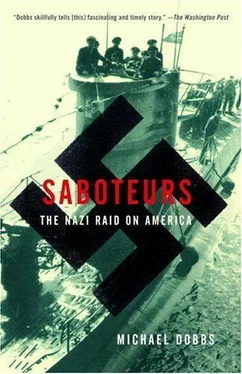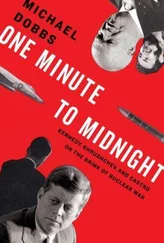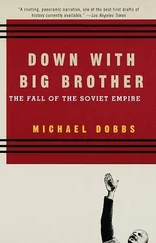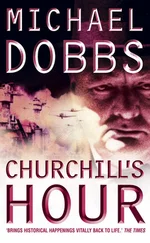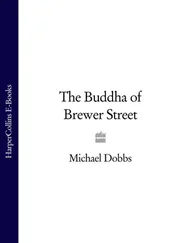INSIDE ROOM 5235, the trial was turning into a contest of gladiators. Both Biddle and Royall were experienced trial lawyers. They had both studied law at Harvard, and they were both physically imposing. Biddle was six feet two, Royall a towering six feet five. In other respects, however, they were very different, both physically and in the way they approached the case. Biddle wore a neatly cropped mustache in the middle of his round face, with a few strands of carefully combed hair struggling to conceal a bald pate. With his air of noblesse oblige, dazzling white suit, and ever-present pocket handkerchief, Biddle could have been a European dandy strolling the boulevards of Paris. Royall, by contrast, dressed in a loosely fitting military uniform. He had a soft, pleasant voice tinged by a deepchested North Carolina drawl, and a country boy personality that disguised an intensely competitive nature. He was better prepared and more incisive than Biddle, with an ability to go quickly to the heart of a complicated legal argument.
Although he had the more effective courtroom manner, Royall also had the weaker case. The defense strategy rested on exploiting a series of legal technicalities and procedural irregularities, which might have made an impression on a civilian court or even a regular court-martial, but were largely irrelevant to a military tribunal that made up its own rules. Under the “reasonable man” standard decreed by the president, the judges were not even bound by the rules of evidence outlined in the courts-martial manual. Biddle made the most of his extraordinary latitude to introduce evidence that would have been inadmissible in a civilian trial.
Key to the prosecution’s case were the “confessions” elicited from the saboteurs by the FBI, in which each defendant incriminated not only himself but the others. Royall argued in vain that the courts-martial manual forbade the use of such pretrial statements against other members of an alleged conspiracy. Biddle dismissed the defense argument as an irrelevant technicality. Royall then rose to invoke the centuries-old legal traditions of the Anglo-Saxon world, which “stood in sharp contrast” to the legal system of totalitarian states like Nazi Germany. To rely on “the unsworn, unexamined, and uninvestigated” declaration of one defendant as evidence against the remaining seven, Royall said, would undermine the most basic principles of American justice. His passionate rhetoric notwithstanding, the judges sided with Biddle and declared the evidence admissible.
In fact, Biddle was selective in his use of confessions. He opposed the reading of Dasch’s 254-page statement into the record on the grounds that it was superfluous and “self-serving.” He preferred to have an FBI agent summarize the document. Seated by the wall, Dasch could scarcely restrain himself. He felt the statement would demonstrate that he had fully cooperated with the American authorities in uncovering the sabotage plot. Ristine relayed to the tribunal Dasch’s demand that the whole document be read aloud, adding plaintively, “It is his freedom that is at stake, not mine.” This time, the judges agreed with the defense. Since the statement was so long, the task of reading it aloud was assigned to relay teams of junior lawyers and FBI agents. It took three days of rapid-fire recitation to complete the job.
Ristine did not help his client’s case with his cross-examination of Duane Traynor, the FBI agent who had spent five days interrogating Dasch after he first came to Washington. At first, Traynor told the commission, he had been impressed by Dasch’s “sincerity and truthfulness,” but came to have doubts about his informant. He cited Dasch’s erratic behavior in first insisting that nothing be said about his role in going to the FBI because he wanted to protect his parents from retribution by the Nazis and later deciding that he wanted the world to know about his actions. There were times, Traynor added, when Dasch seemed to be deliberately holding back information.
The reading of confessions was occasionally interrupted by demonstrations of sabotage paraphernalia. The FBI explosives expert, Donald Parsons, invited the judges to marvel at the ingenuity of the bomb-making equipment recovered from the beaches of Amagansett and Ponte Vedra. Sometimes, his enthusiasm ran away with him, as when he offered to assemble an “American fountain pen” set cunningly designed to conceal a delay mechanism for detonating explosives. “I think it had better be unassembled, so as to put it in a safe condition,” a tribunal member commented dryly.
A few days later, another FBI agent demonstrated the system of secret writing used by the saboteurs. He produced the white handkerchief confiscated from Dasch, stretched it tautly over a frame, and exposed it to an uncorked bottle of ammonium hydroxide.
“Can the commission see?” Biddle asked, as red letters appeared on the handkerchief.
“The commission can see and smell,” replied McCoy.
Biddle wound up his case with a plea for a commonsense approach to the evidence, ignoring the legal quibbles raised by the defense. “These men, not having an opportunity to talk it over, on the whole made confessions entirely bearing out what each other said. Dasch supports Burger, Burger supports Kerling and so on, down the line.” He compared the powers of the military commission to administrative tribunals such as the Securities and Exchange Commission that were not bound by the hearsay rule. It was difficult to conceive, he said, that “a body of reasonable men” would reject confessions that bore “the obvious marks of truthfulness.”
This gave Royall an opening. The prosecution, he told the judges, was trying to apply the standards of “a dollar-and-cents controversy” to a capital case. “If that is the law, we are losing mighty near all of our vaunted system of criminal justice.” The judges were unimpressed by his eloquence. Shortly before noon on July 20, McCoy ruled that the confessions of the defendants were valid evidence “for all purposes.”
“The prosecution rests its case,” Biddle concluded.
DEPRIVED OF news from the trial, Americans devoured information about sabotage plots, real or imagined. Books about saboteurs and subversives shot to the top of the best-seller lists. Suddenly, everyone in the country was on the lookout for German agents. The FBI was swamped with offers of assistance, tips, derogatory information about next-door neighbors, and suggestions on how to deal with the “Nazi rats.”
“Why waste bullets or electricity on them?” was a typical sentiment, expressed by Theodore Piaszczyk of South Carolina soon after the trial began. 26“I am not rich, just a shipfitter at the Charleston navy yard, but I will donate $5 a head to the government, if you will give me the privilege of putting the rope around their necks, by my own hand. I am not the man to kill a chicken, but I would like to get my hands on those rats.”
An anonymous message from New York City apologized for bothering Hoover on the July 4 holiday, and then added: “We don’t want to be alarmists. But please investigate 306 West 99th Street. Hates women tenants. Lets men with shortwave sets keep them on all night.”
“The entire country owes you a big vote of thanks,” a Miss M. R. Shaeffle wrote Hoover from San Francisco. “When I think of the damage these men could have done if you hadn’t caught them, it fairly makes me sick. I sincerely trust they get what is coming and get it quickly!” E. C. Newman, a Baltimore businessman, called for the saboteurs to be given a “fair trial” and then be “shot at sunrise.”
Hoover kept a file of cartoons and newspaper editorials about the case. When a cartoon struck his fancy, he requested the original to hang in his den at home. One drawing he particularly liked showed a Hoover vacuum cleaner labeled “FBI” sucking up panicked enemy agents across a map of the United States. The FBI director made sure that the more blood-curdling editorials—such as “Shoot them” (New Orleans States) or “Give them death” (El Paso Times) —were forwarded to Biddle.
Читать дальше
